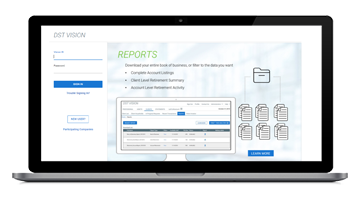What tax advantages do SMAs offer?
Investors in separately managed accounts own the underlying securities within a portfolio, a distinction that helps provide many benefits, including greater potential tax efficiency.

More opportunities to harvest losses
A significant difference between separately managed accounts (SMAs) and mutual funds or exchange-traded funds (ETFs) is that an SMA investor owns the underlying securities within the portfolio instead of shares of a pooled vehicle that represent an investment in the underlying holdings. This difference is key to one of the main tax advantages offered by SMAs: the ability to offset taxable gains by harvesting losses in these individual securities.
While mutual fund and ETF investors can benefit from tax-loss harvesting, this benefit is limited to years when the fund or ETF has experienced a loss. SMA investors, however, can potentially benefit from tax-loss harvesting even if the strategy has positive performance for the year.
To illustrate this point, consider a hypothetical SMA that holds five securities.
Average weight |
Annual return |
|
Security A |
27.0% |
6.3% |
Security B |
23.0% |
3.1% |
Security C |
21.0% |
-2.7% |
Security D |
18.0% |
4.0% |
Security E |
11.0% |
-3.2% |
Strategy return |
2.2% |
This hypothetical SMA strategy has gained 2.2% for the year. If a similar strategy had been offered as a mutual fund or ETF, the investor wouldn’t be able to harvest any losses for the year.
However, investors in an SMA would be able to sell securities C and E, offsetting the gains elsewhere in the portfolio and reducing the overall tax liability. After 30 days, the SMA manager would then be able to repurchase the securities if desired, avoiding the wash sale restriction that would nullify this tax benefit.
No embedded capital gains for SMAs
Another tax advantage of SMAs is that investors within these vehicles aren’t subject to embedded capital gains. This differs from a mutual fund, where the cost basis of the underlying securities doesn’t necessarily reflect the security’s price on the day an investor purchases shares of the mutual fund. This mismatch can create the potential for a scenario in which there is a tax liability even if the end investor hasn’t experienced a gain.
In addition to this risk, 2022 was a reminder mutual funds can still distribute capital gains in down markets. Certain scenarios, such as a period of net outflows sparked by negative performance, can force portfolio managers to sell appreciated stock positions to meet investor redemptions. This can increase the likelihood of capital gains distributions for all shareholders, even those who haven’t sold their position or made any money on their investment.
With SMAs, there are no embedded capital gains to worry about. Since the underlying securities are purchased directly, end investors will only pay taxes on gains they’ve received a direct benefit from, making SMAs a more tax-efficient vehicle compared to mutual funds.
Greater control over your tax bill
Finally, SMAs can potentially provide investors with a higher degree of control over their tax bill. Since investors are working directly with the asset manager, they can deploy several strategies to limit their tax liability in any given year.
As an example, investors looking to switch from one SMA to another might transition into the new strategy over time, spreading taxable gains over more than one calendar year. If there are overlapping securities between the two strategies, these holdings can be transitioned in kind rather than being sold, avoiding a taxable event.
Some high-net-worth investors might even want to consider their SMA holdings as a funding source for charitable giving. By identifying securities that have appreciated well above their cost basis, investors can donate these holdings directly to a qualified charity, avoiding a capital gains tax. The fair market value of the donated shares can then be deducted from taxable income, helping to further reduce tax liability. As every financial situation is unique, SMA investors should consult with their tax advisor and a financial professional to help identify the best way to limit their tax liability.
Choosing an SMA for your portfolio
The tax-friendly nature of SMAs can have a sizable benefit on portfolios over time, but it's important to note that they may not be suitable for everyone and are generally reserved for accredited investors only. Investors that are able to access SMAs will often combine them with ETFs and mutual funds, constructing their portfolio with a full understanding of the advantages and disadvantages of each investment vehicle.
As we near the end of the year, a time when many mutual funds are likely to distribute capital gains, this could be a good time for investors in taxable accounts to reassess whether a tax-efficient vehicle like an SMA might be the right choice for their portfolio.
Important disclosures
Important disclosures
This material is for informational purposes only and is not intended to be, nor shall it be interpreted or construed as, a recommendation or providing advice, impartial or otherwise. John Hancock Investment Management and our representatives and affiliates may receive compensation derived from the sale of and/or from any investment made in our products and services.
The views presented are those of the author(s) and are subject to change. No forecasts are guaranteed. This commentary is provided for informational purposes only and is not an endorsement of any security, mutual fund, sector, or index. Past performance does not guarantee future results.
Diversification does not guarantee a profit or eliminate the risk of a loss.
SMAs are intended for HNW, investment-savvy individuals and may not be appropriate for all investors.
SMA3201407





